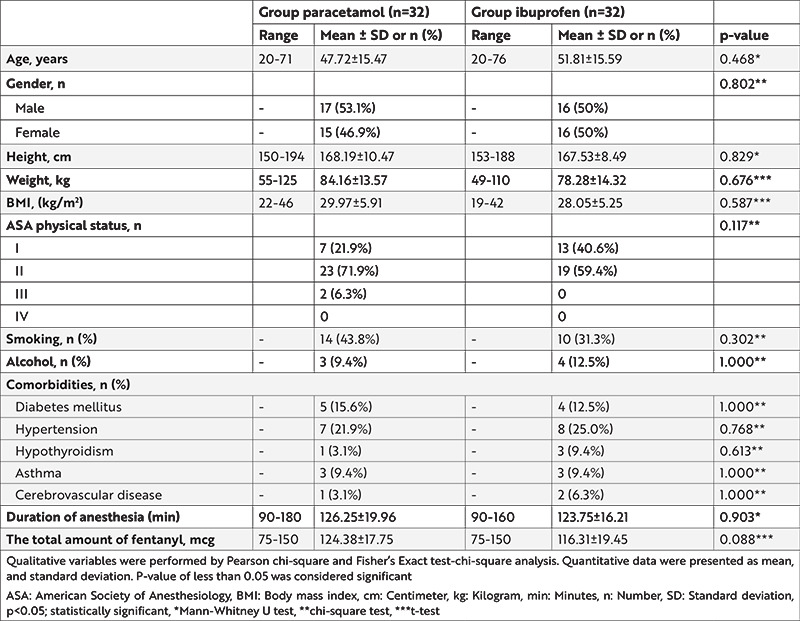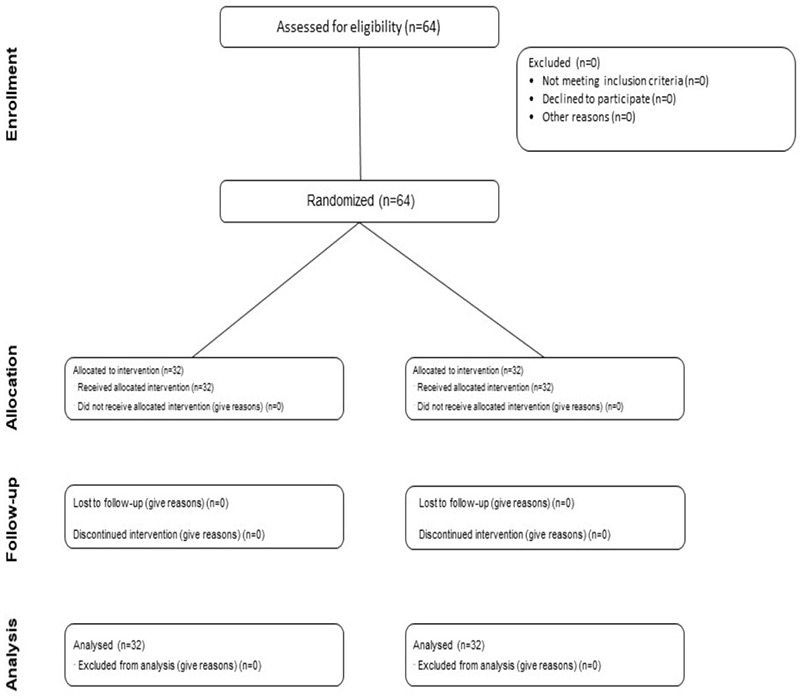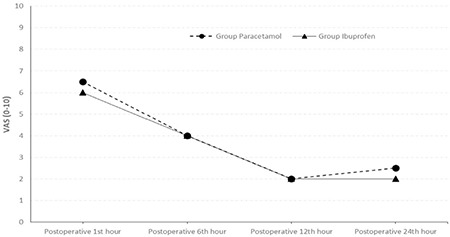Efficacy of Intravenous Ibuprofen and Paracetamol on Postoperative Pain and Tramadol Consumption After Arthroscopic Shoulder Surgery: A Prospective, Randomized, Double-blind Clinical Trial.
IF 1.1
Q2 MEDICINE, GENERAL & INTERNAL
引用次数: 0
Abstract
Objective: Efficient pain management following arthroscopic shoulder surgery plays a crucial role in decreasing pain intensity, tramadol consumption, and related side effects. This study primarily aimed to examine the analgesic impact of intravenous (IV) ibuprofen and paracetamol on postoperative pain intensity. In addition, as secondary objectives, the study assesses tramadol consumption, determine the global satisfaction score (GSS), analyze hemodynamic parameters, and investigate tramadol-related side effects. Methods: In this study, we enrolled sixty-four patients who were scheduled to undergo arthroscopic shoulder surgery and met the inclusion criteria of having American Society of Anesthesiologists scores between 1 and 3 and falling within the age range of 18 to 85 years. All participants were managed using IV patient-controlled analgesia. These patients were then randomly assigned in a double-blind manner to two groups: one receiving paracetamol (n=32), and the other receiving ibuprofen (n=32). Demographic information, visual analog scale (VAS) and GSS data, hemodynamics, tramadol consumption, and tramadol-related side effects were recorded. Results: There were no significant differences between the two groups regarding demographics, hemodynamics, GSS scores, and tramadol side effects (respiratory depression, pruritus, urinary retention, and nausea and vomiting). VAS scores of the two groups were similar at postoperative 1st, 6th, and 12th hours. However, group ibuprofen significantly reduced the VAS scores at the postoperative 24th hour (p=0.039). On the other hand, the two groups showed no significant differences in GSS scores. Compared with total tramadol consumption during the postoperative 24-hour period, ibuprofen significantly reduced tramadol consumption (p=0.003). Conclusions: The findings of this study indicate a significant reduction in both pain intensity and tramadol consumption when IV ibuprofen was administered 24 hours following arthroscopic shoulder surgery, in comparison with the use of IV paracetamol.



静脉注射布洛芬和对乙酰氨基酚对关节镜下肩部手术后疼痛和曲马多消耗的疗效:一项前瞻性、随机、双盲临床试验。
目的:肩关节镜手术后有效的疼痛管理在降低疼痛强度、曲马多用量和相关副作用方面起着至关重要的作用。本研究主要旨在研究静脉注射布洛芬和扑热息痛对术后疼痛强度的镇痛作用。此外,作为次要目标,本研究评估曲马多的消耗量,确定总体满意度评分(GSS),分析血液动力学参数,并调查曲马多相关的副作用。方法:在这项研究中,我们招募了64名患者,他们计划接受关节镜下肩部手术,并符合美国麻醉师协会评分在1到3之间、年龄在18到85岁之间的纳入标准。所有参与者均使用静脉自控镇痛进行管理。然后以双盲方式将这些患者随机分为两组:一组接受扑热息痛治疗(n=32),另一组接受布洛芬治疗(n=32)。记录人口统计学信息、视觉模拟量表(VAS)和GSS数据、血液动力学、曲马多用量和曲马多相关副作用。结果:两组在人口统计学、血液动力学、GSS评分和曲马多副作用(呼吸抑制、瘙痒、尿潴留、恶心呕吐)方面没有显著差异。两组患者术后第1、6、12小时VAS评分相似。然而,布洛芬组在术后24小时显著降低了VAS评分(p=0.039)。另一方面,两组的GSS评分没有显著差异。与术后24小时内的曲马多总消耗量相比,布洛芬显著减少了曲马多的消耗量(p=0.003)。结论:本研究结果表明,与静脉注射扑热息痛相比,关节镜肩部手术后24小时静脉注射布洛芬可显着降低疼痛强度和曲马多消耗量。
本文章由计算机程序翻译,如有差异,请以英文原文为准。
求助全文
约1分钟内获得全文
求助全文
来源期刊

Medeniyet medical journal
Medicine-Medicine (all)
CiteScore
1.70
自引率
0.00%
发文量
88
审稿时长
5 weeks
期刊介绍:
The Medeniyet Medical Journal (Medeniyet Med J) is an open access, peer-reviewed, and scientific journal of Istanbul Medeniyet University Faculty of Medicine on various academic disciplines in medicine, which is published in English four times a year, in March, June, September, and December by a group of academics. Medeniyet Medical Journal is the continuation of Göztepe Medical Journal (ISSN: 1300-526X) which was started publishing in 1985. It changed the name as Medeniyet Medical Journal in 2015. Submission and publication are free of charge. No fees are asked from the authors for evaluation or publication process. All published articles are available online in the journal website (www.medeniyetmedicaljournal.org) without any fee. The journal publishes intradisciplinary or interdisciplinary clinical, experimental, and basic researches as well as original case reports, reviews, invited reviews, or letters to the editor, Being published since 1985, the Medeniyet Med J recognizes that the best science should lead to better lives based on the fact that the medicine should serve to the needs of society, and knowledge should transform society. The journal aims to address current issues at both national and international levels, start debates, and exert an influence on decision-makers all over the world by integrating science in everyday life. Medeniyet Med J is committed to serve the public and influence people’s lives in a positive way by making science widely accessible. Believing that the only goal is improving lives, and research has an impact on people’s lives, we select the best research papers in line with this goal.
 求助内容:
求助内容: 应助结果提醒方式:
应助结果提醒方式:


